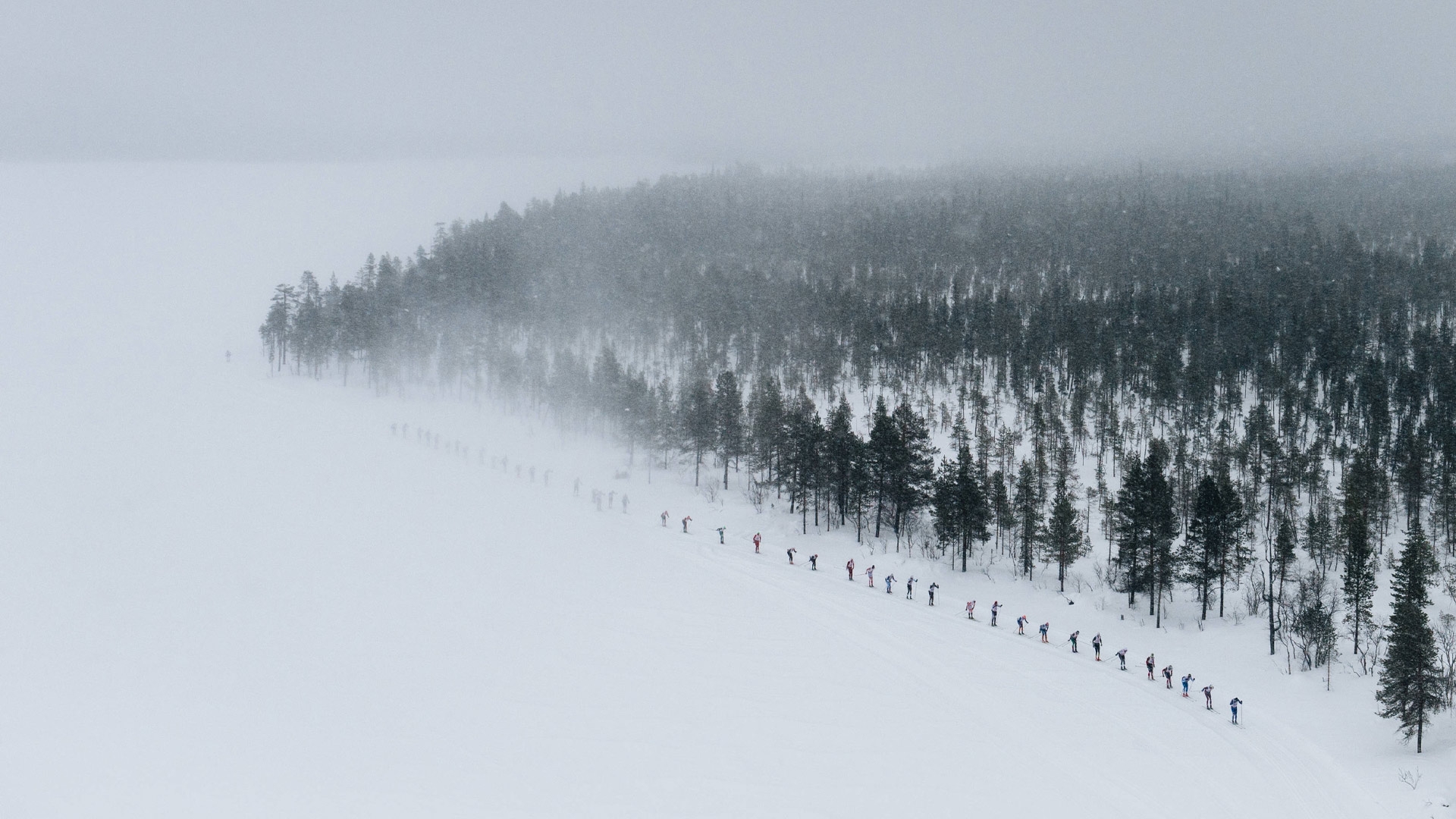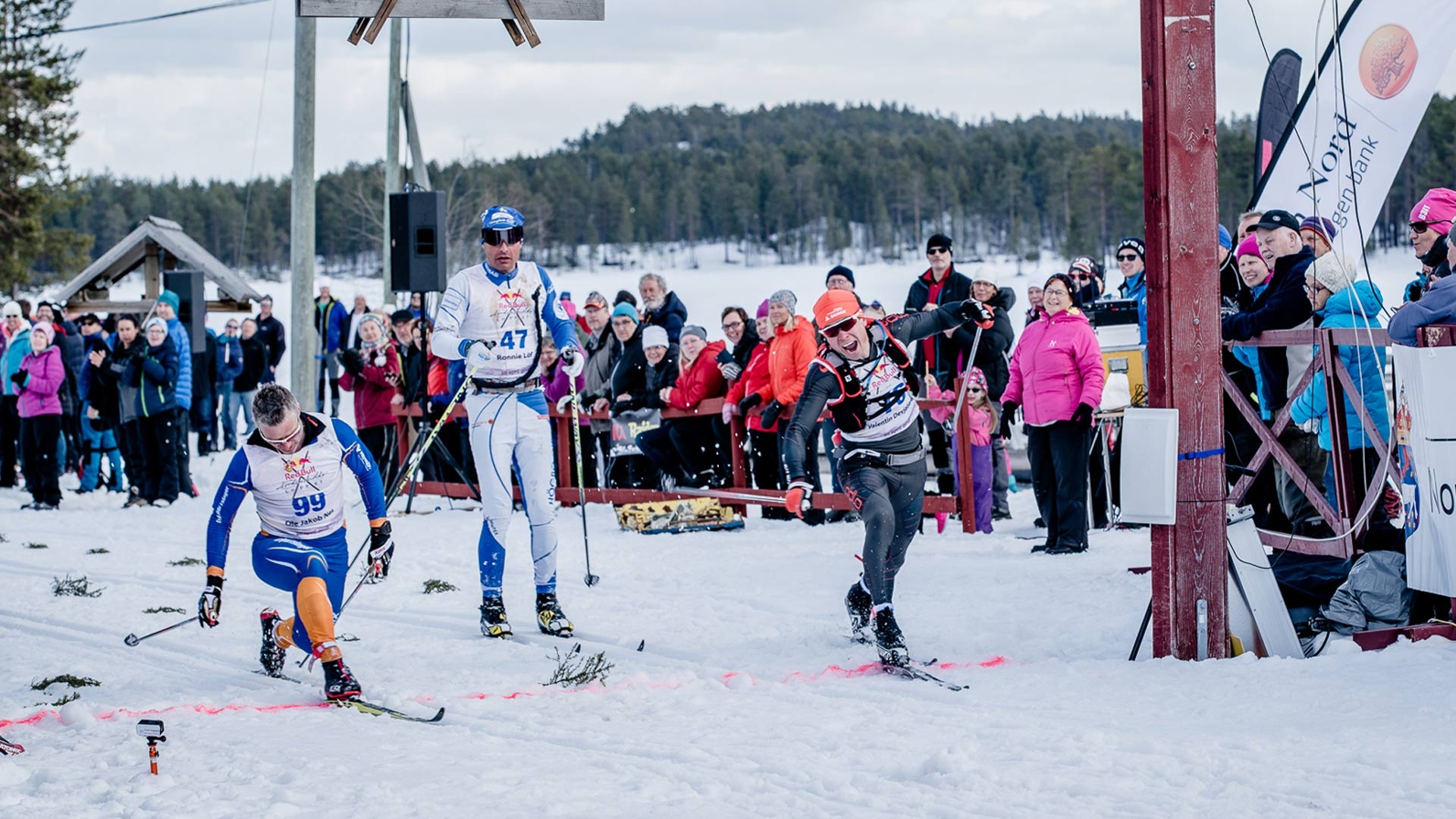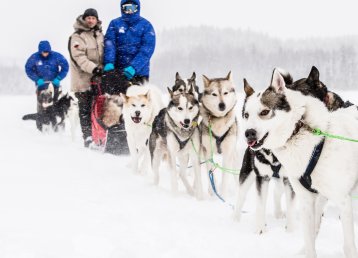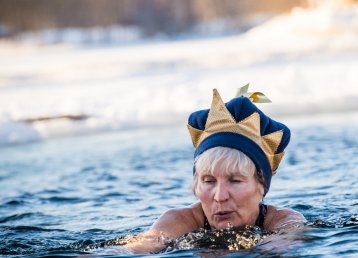It’s hard to know what goes through the head of someone who’s about to travel 200 km on skis. Probably a lot of things. There are a lot of skiers too. Every year, around 30,000 skiers participate in Vasaloppet, 90 kilometres. But when the race is another 130 km, then what? 220 km on skis seems to attract hundreds of participants rather than thousands. It’s tough, and for most people, the mental challenge is something they’ve never encountered.
Being well prepared is always key. You can do Vasaloppet untrained. Lots of people have done it several times. It won’t be fast, it won’t be good – but it’s possible. But skiing 220 km untrained just won’t work, not if you want to make it while the competition management still provides timing.
For fun
– “Let’s do it for fun!”, is what my cousin Viktor and I said before the race, Frida Lind-Oja explains. I’ve phoned her to ask what went through her head before the start of the first modern Nordenskiöld Race in Jokkmokk.
– We just wanted to do it, and we knew we could make it. In a way, I’m probably more nervous about Vasaloppet. There you’re always chasing a ‘good time’ she states and continues:
– Here we were facing something we’d never done before, then it isn’t easy to set competitive targets. But once you get started… Well, then the competitive devil inside takes over, she says, laughing.
– I’m lucky to have such excellent training facilities just outside work here at Camp Ripan: the Matojärvi track and the Wolf pit. Then there’s the Lombolo track downtown when you want to practise using the ski poles.
But where did it all begin, anyway?
The modern version began in 2009 when Austrian Wolfgang Mehl, 51, attended the Jokkmokk Winter Conference. He fell head over heels for nature and the fact that you could ski for more than six months a year, so he moved there. Soon he heard people talk about the classic race and thought: “This is too good not to take further – the historical background, and a strong interest in the ultra-distance”. When Red Bull said they were interested, all he had to do was launch the event in memory of a race held 132 years ago. Red Bull actually saw so much potential they made Wolfgang launch the competition a year earlier than he had actually planned.
The modern Nordenskiöld Race started from Purkijaure in Jokkmokk on the 10th of April 2016. The modern version pays homage to the first race – Sweden’s first ultra-long skiing race. The modern race was supposed to be 220 km – just like the first race back in 1884. But the weather didn’t want to cooperate. A 180-km track was prepared, but some contestants protested – they wanted to ski 200 km – and if that’s what they wanted, then, of course, they should be able to. And an additional loop was added along the track. But from 2017, the Nordenskiöld Race is 220 km, just like the original.
Greenland, year 1883
In 1883 a certain Baron Nils Adolf Erik Nordenskiöld, Swedish but born in Finland, went to Greenland. Nordenskiöld was an explorer and geologist searching for raw materials, sponsored by the merchant Oscar Dickson from Gothenburg. Incidentally, Dickson would later figure in a trial that gave Swedish a word for dubious commercial practices (“baggböleri”).
Nordenskiöld is best known for the Vega expedition, 1878–1880, opening the Northeast Passage. But in 1883, he was trying to cross the Greenland ice sheet. He didn’t make it. When he decided to turn back, he let two Sámi from Jokkmokk, Pavva Lars Nilsson Tuorda and Anders Pavasson Rassa, go on a little skiing trip. Without more supplies they could fit in their traditional gáhkti dress – dried reindeer meat and some snacks – the two Sámi left.
57 hours later, they rejoined the expedition. They claimed to have skied 230 km towards the east before turning back. Apart from a miserable little snowstorm that lasted four hours, it had all gone well. That’s 460 km on skis in 57 hours, and according to Tuorda, Greenland was nothing but a great white mass – but an amazing place for a skier. He had never experienced better surface conditions, for sure. When the expedition made it home to Sweden again, they were met by heavy criticism. No one would believe the achievement and Nordenskiöld’s academic dignity was at stake. A ski race the year after, Jokkmokk to Kvikkjokk and back, became the proof to the contrary and restored Nordenskiöld’s dignity.
21 hours and 22 minutes
So Baron Nordenskiöld turned to dubious businessman Dickson to ask if he would sponsor a ski race. And Dickson did. On the 3rd of April 1884, after being postponed because of lousy conditions, an 18-man strong line-up got going. One of them was Pavva Lars Nilsson Tuorda, called a liar from the Greenland ice cap. Anders Pavasson Rassa wasn’t bothered about the contest; he had reindeer to care for.
The achievement was admirable, considering the untracked terrain, the bad weather and the clumsy equipment. The skis of that time were between two and three meters long and really wide, with a weight of about three times today’s competition skis. And it was sparse between the fluid controls, and the fluid deficiency was constant.
Eleven contestants fulfilled the race. Pavva Lars won – a mere five seconds before Per-Olof Länta – with a final time of 21 hours and 22 minutes. That’s an amazing time. 220 km untracked terrain with skis that weighed a ton. They also had a break in Kvikkjokk, 1 hour and 45 minutes, where they had a bit to eat and coffee and cognac for extra energy.
“Thank goodness it’s over!”
The first modern race also ended in a sprint finish. John Kristian Dahl, Anders Aukland, Øyvind Moen Fjeld and Jörgen Brink were all going for it at the end of the race. The Brink had to give up as the three Norwegians sprinted to the finish line. JK Dahl won, one second ahead of his compatriots. Aukland finished second and Fjeld third at the same time. It isn’t easy to imagine people actually having to sprint after 200 km. But then it’s also difficult to understand how people manage to ski 200 km in eight and a half hours. Lina Korsgren won the women’s class before Britta Johansson-Norgren. In the competition as a whole, they finished 24 and 25. I ask Frida Lind-Oja what it felt like when she could see the finish line?
– Well, what do you think? Thank goodness it’s over!
– It wasn’t until later I really felt happy with my achievement. There and then, approaching the finish line, I was just glad it was over. I remember how I sat down after the race. And I could barely get up again. Everything hurt.
– But it’s strange how the body works. Four hours later, when we’d had a bite to eat and were chatting away, we started planning for the next race.
Interested?
Are you interested in taking on the world’s longest cross-country ski race? Learn more at nordenskioldsloppet.se.






























